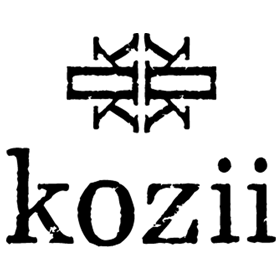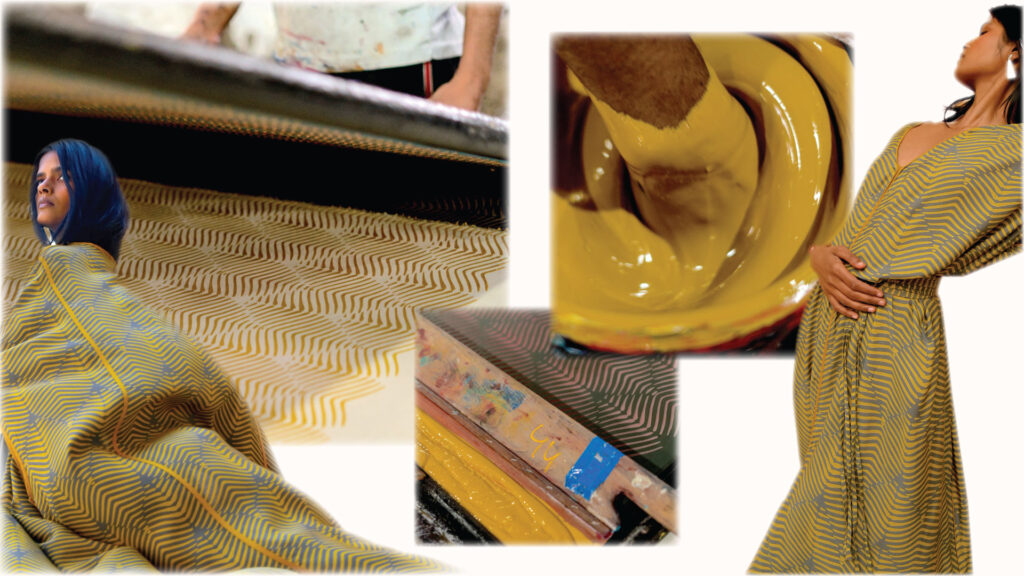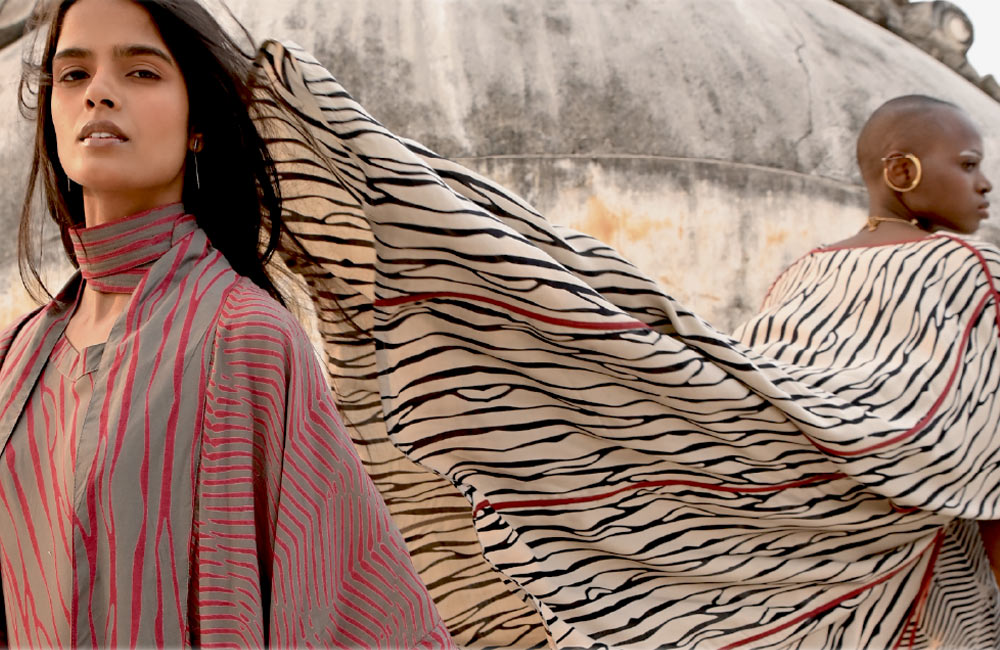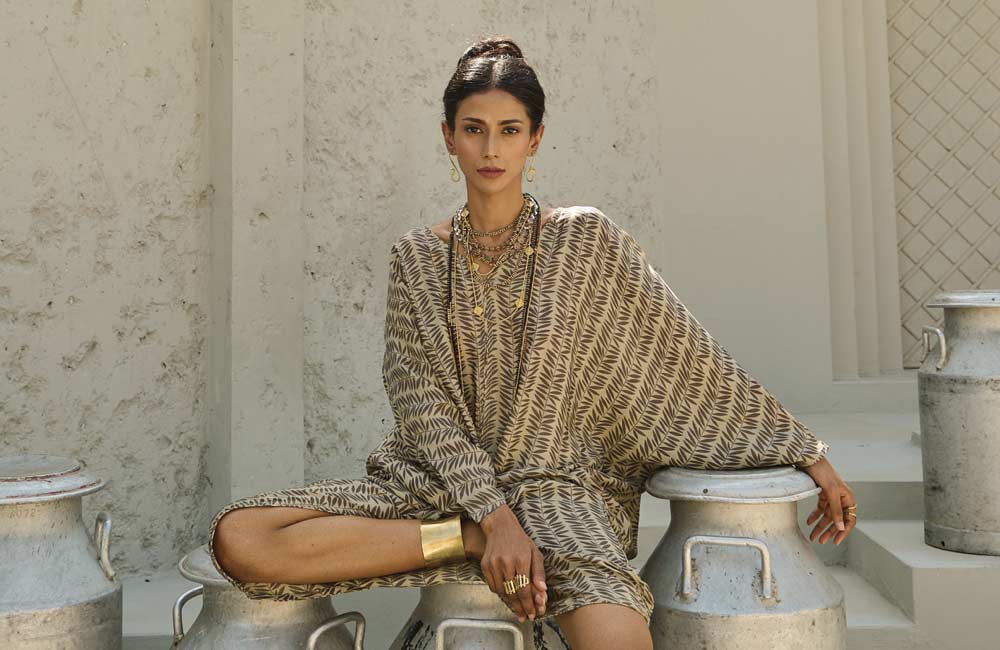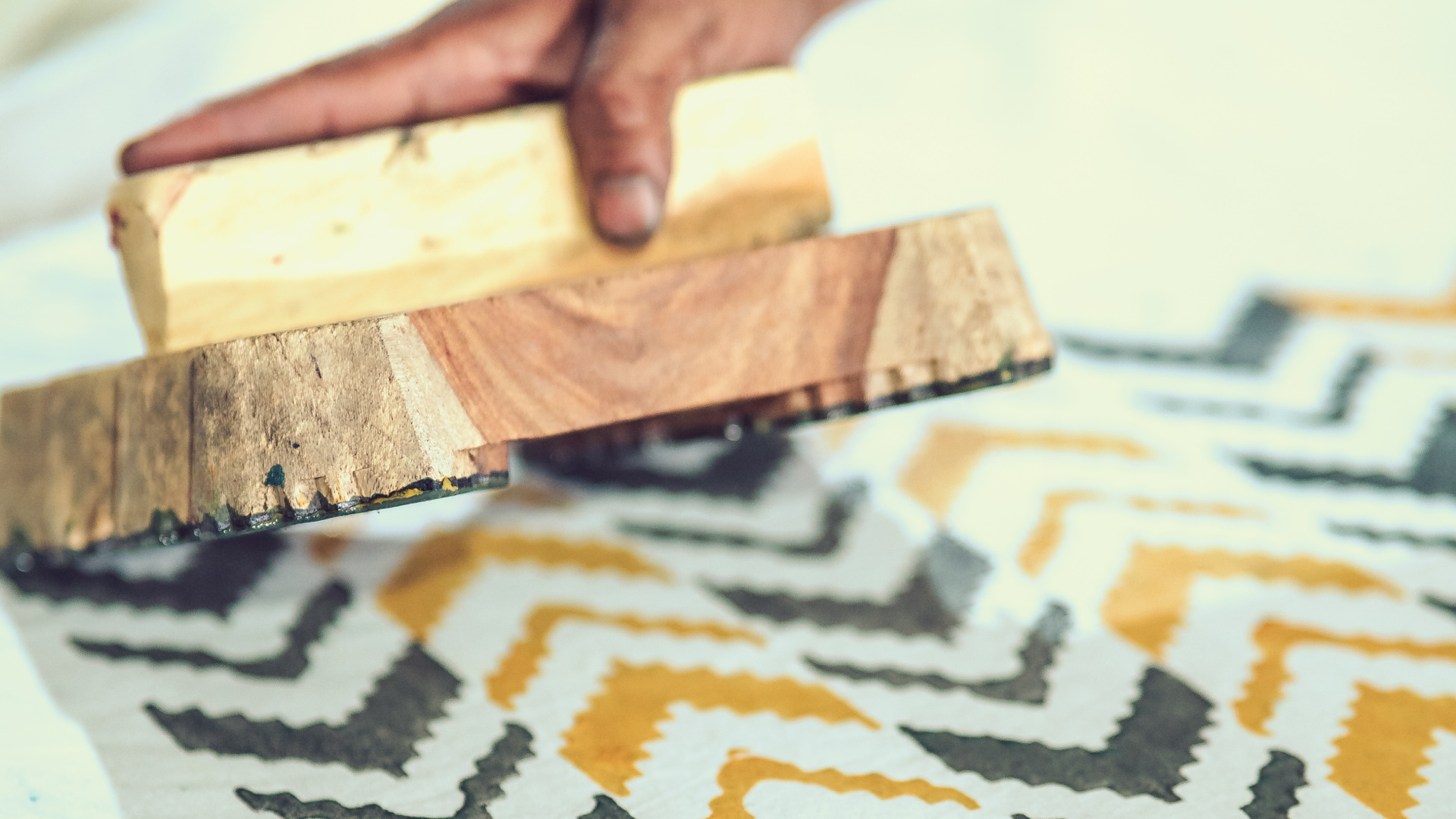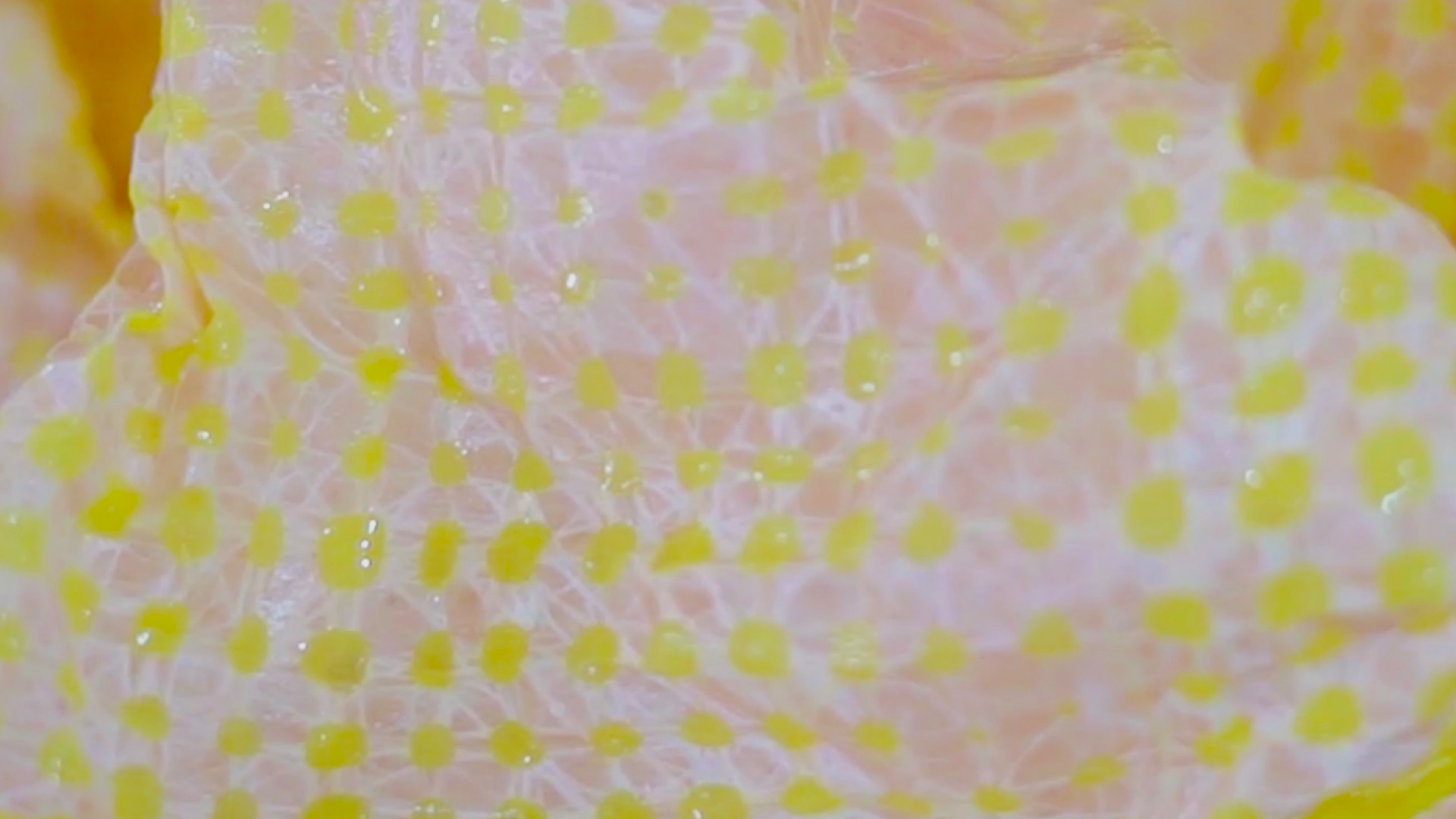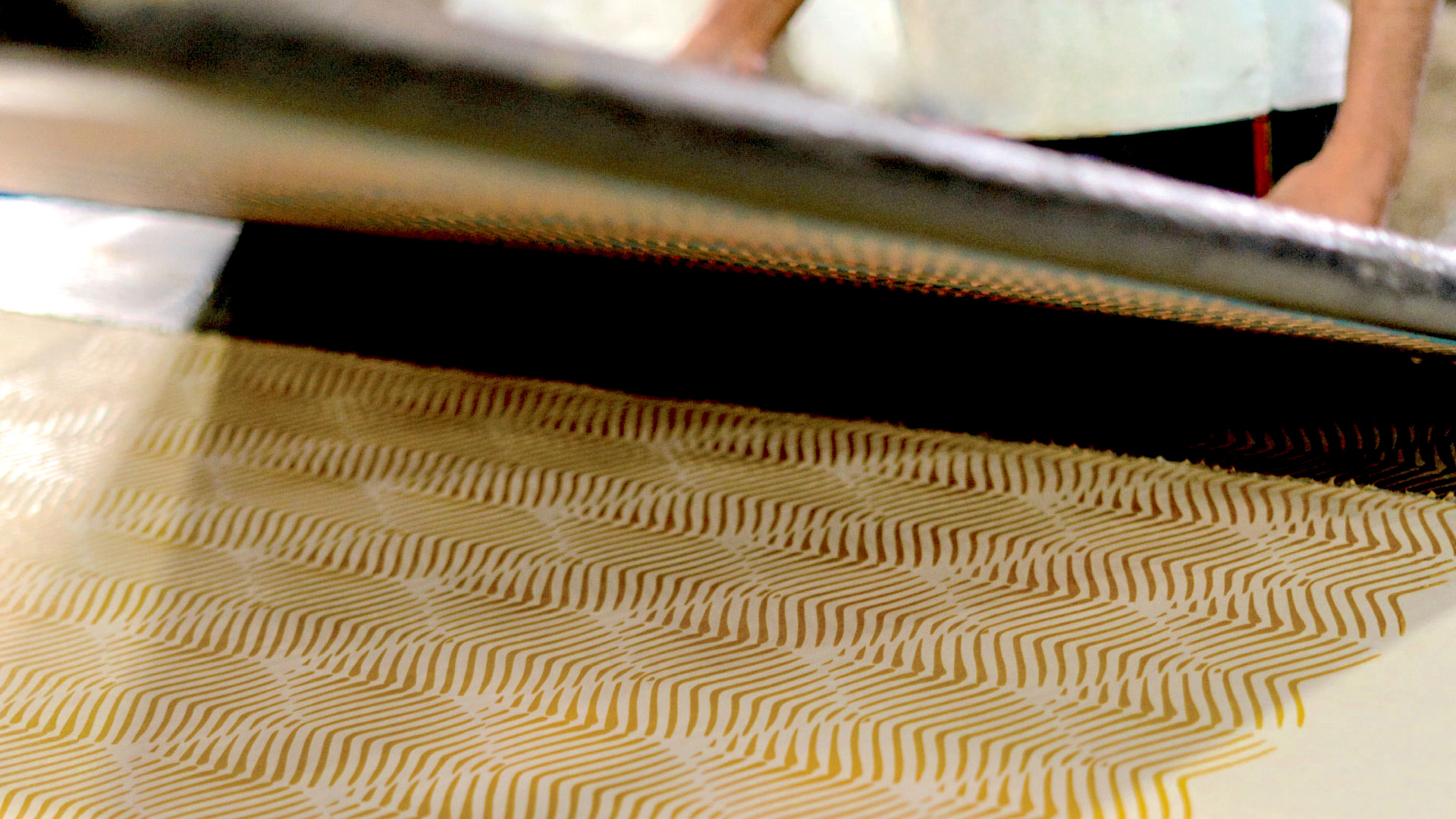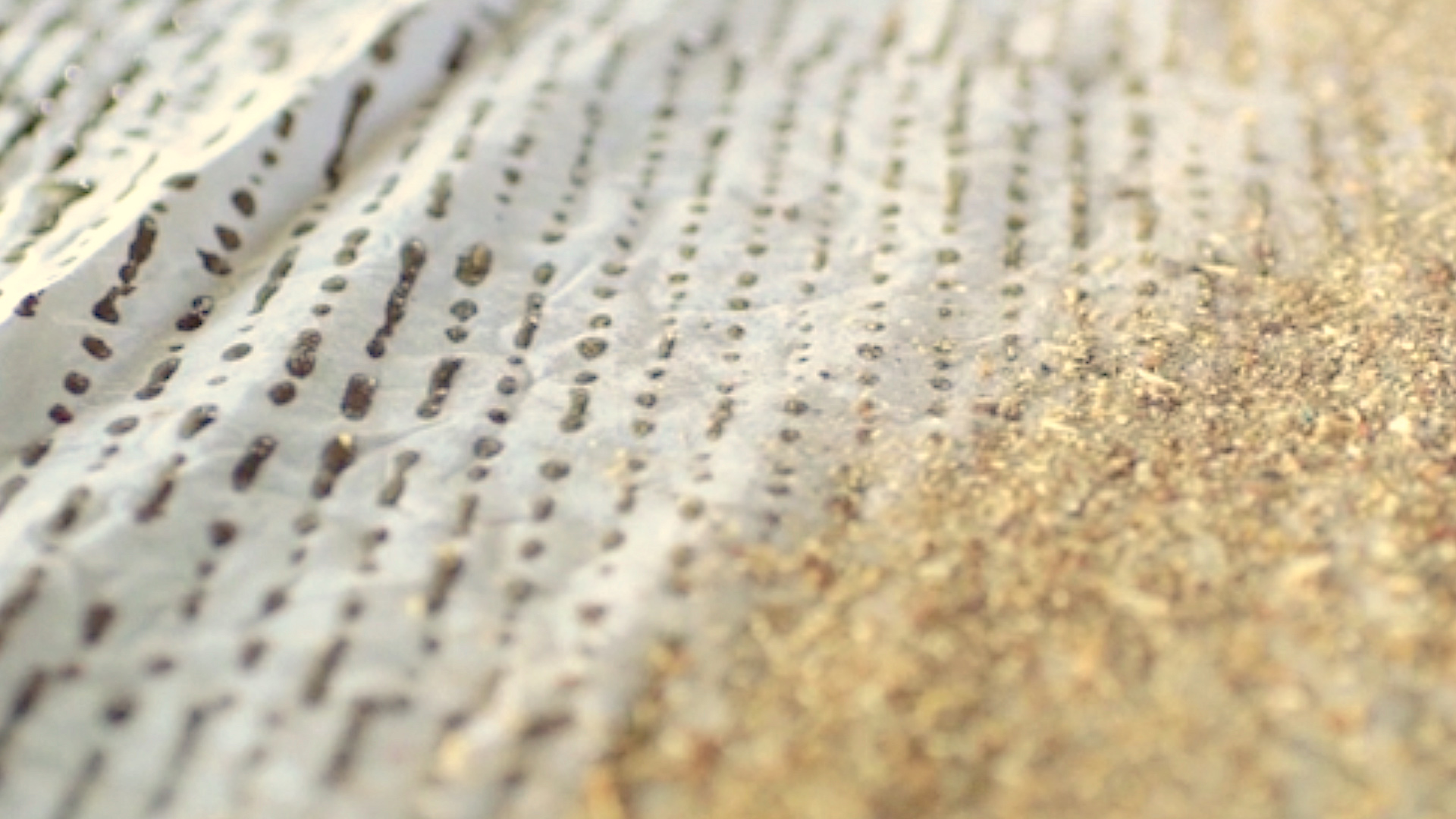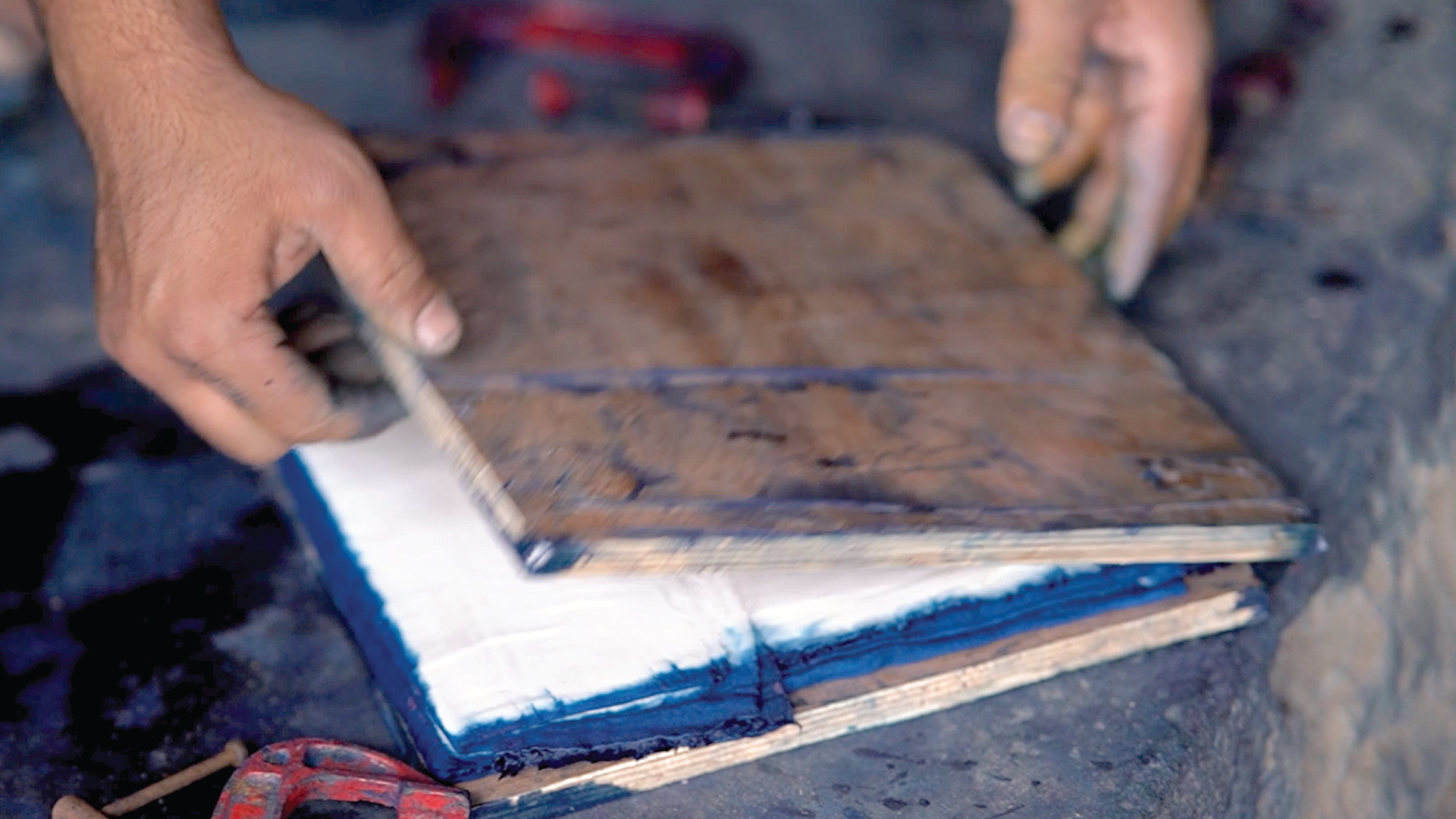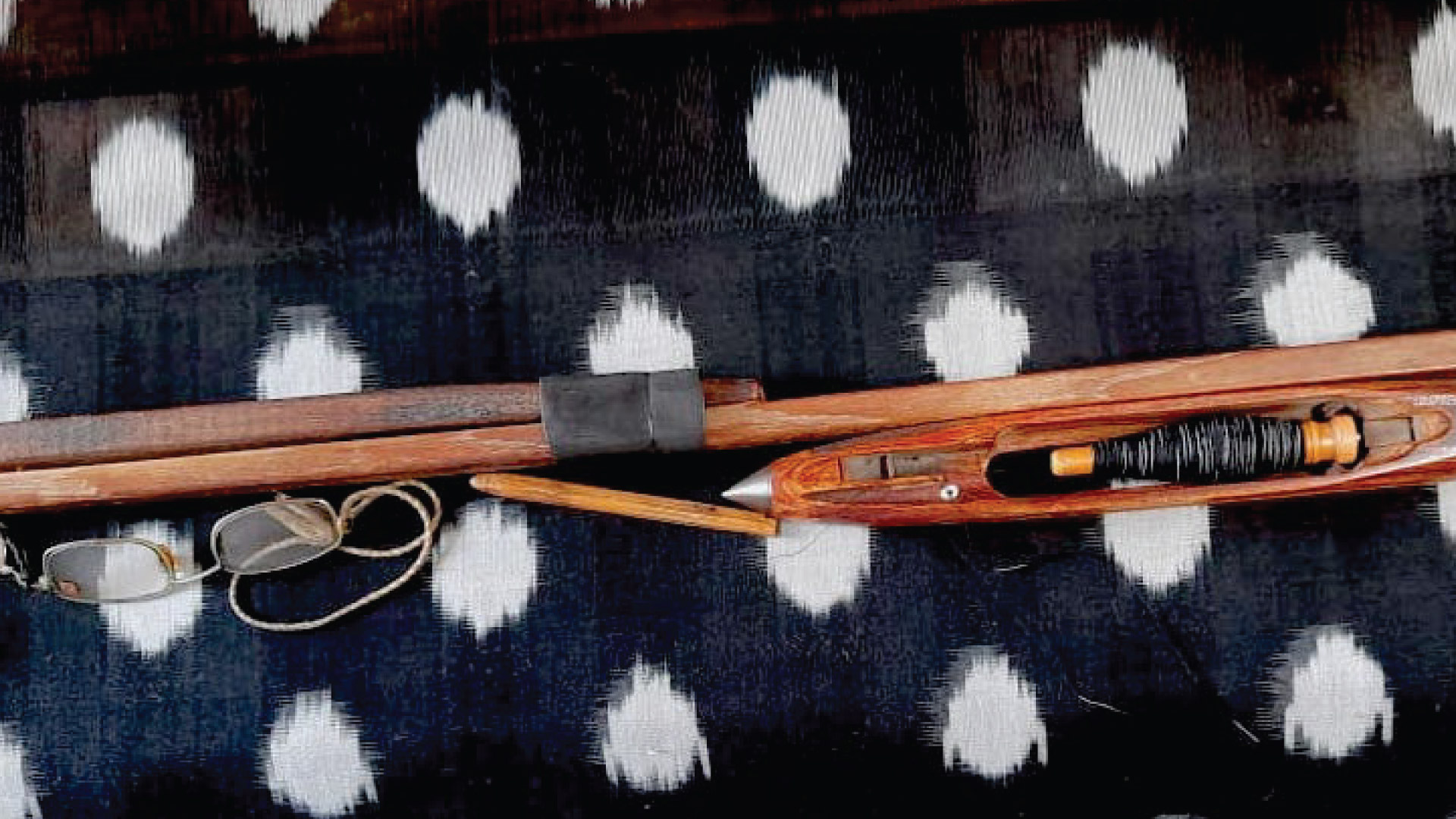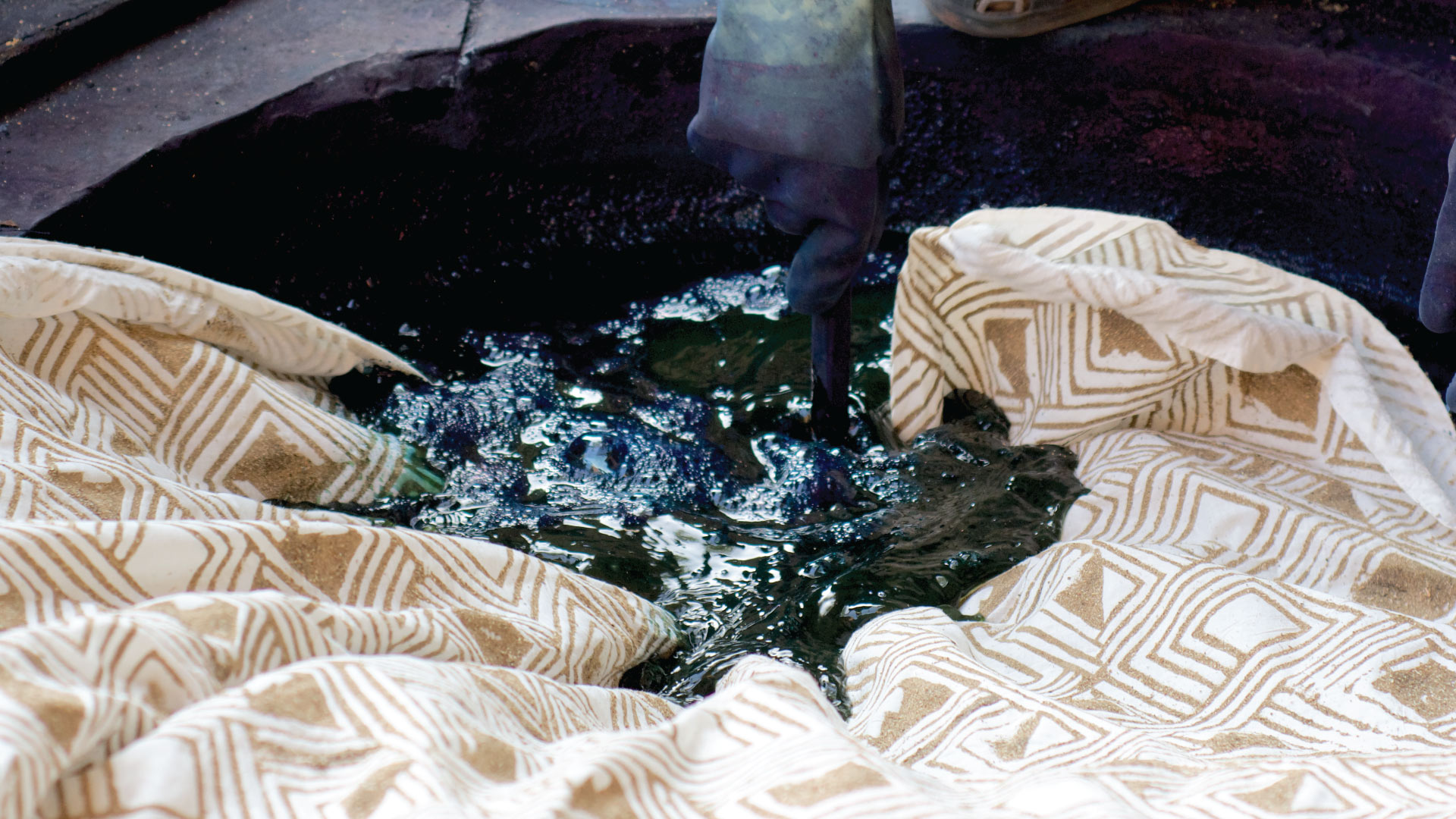Silkscreen printing, along with other stencil-based methods, stands among the oldest forms of printmaking, its origins reaching back to the Song Dynasty in China (960–1279 AD), where it first began to weave its intricate threads into the fabric of history.
Through the visionary hands of contemporary artists like Andy Warhol, screen printing has transcended its origins, blossoming into a dynamic force that weaves its influence through art, textiles, and fashion. Today, it endures, a timeless medium still shaping creative expression.
An original image is the first step in the process. Inks are custom mixed and matched to the desired outcome. The screen printer pulls the ink across the printing frame, which has been placed above the textile that will hold the art work. The ink is then forced through the screen, printing the desired motifs onto the fabric below.
Even knowing that silkscreen printing allows you to create multiple editions of the same artwork, each silkscreened print is considered an original piece since the tactile quality of the ink on the fabrics and the printing style are perceived as inseparable parts of the artwork, which differs invariably from printer to printer.
Watch the video we made on the whole process, step by step.
Screenprinting has been used in the following collections
Our Crafts
In these changing times, it is important to remember that no project makes sense if it doesn’t create some kind of sustainable network that closely safeguards all the people involved and its environmental impact along the production process. Kozii invites you to learn more about the techniques applied to our productions.
Purchase Enquiries?
Get In Touch
Our beloved team is happy to help.
